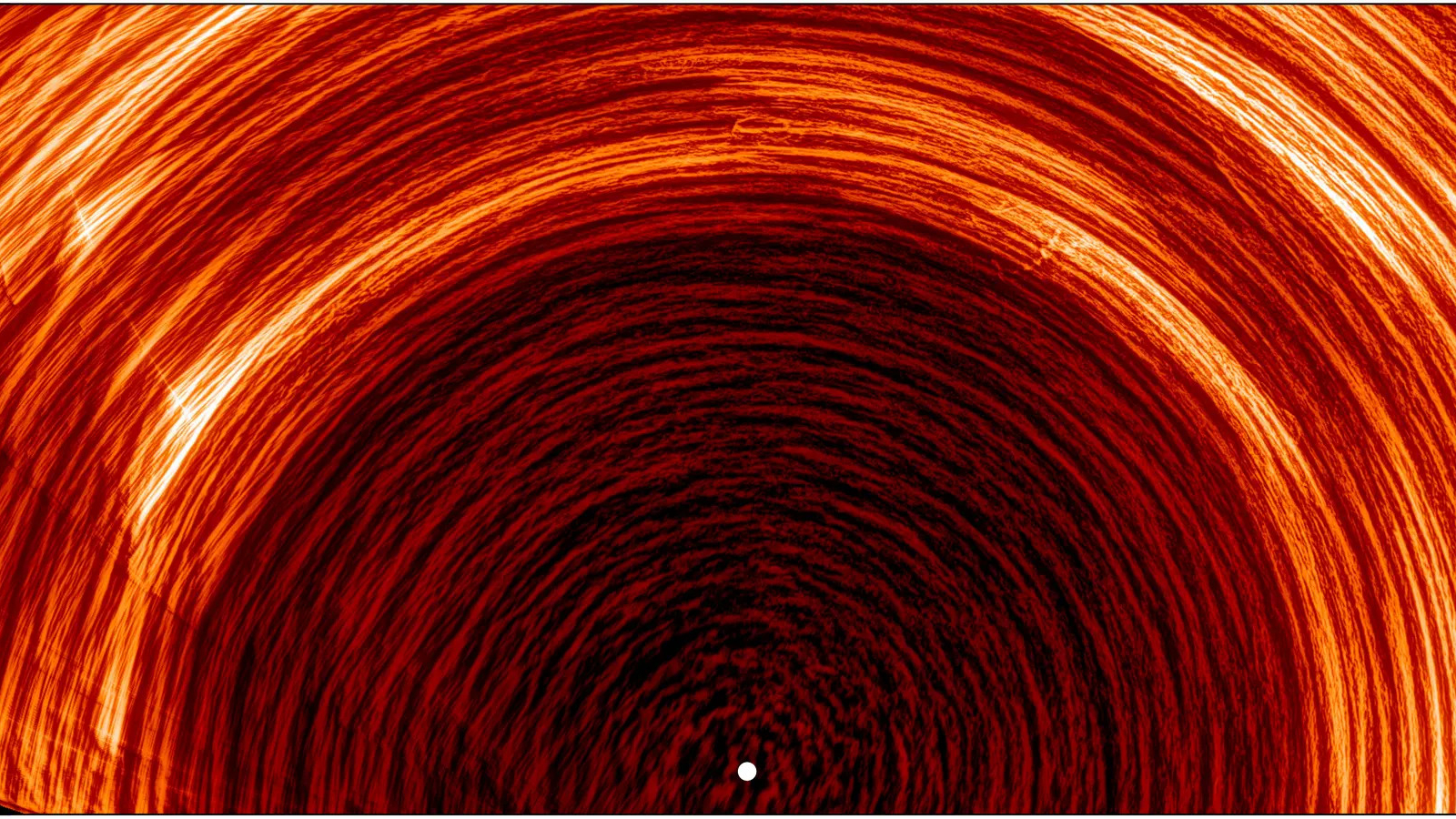ESA's sun spacecraft captures 1st close-up of our star's magnetic engine in motion
"Solar Orbiter can now provide this missing piece of the puzzle."

In a striking new view from space, the European Space Agency's Solar Orbiter has given scientists their first close-up glimpse of the sun's magnetic field near its south pole — and it is behaving in surprising ways.
The image above, a composite of eight days of observations taken in March when the spacecraft had its first clear view of the region, shows bright arcs sweeping around the pole — glowing traces left by magnetic structures drifting toward the sun's edge at unexpectedly high speeds. The findings reveal the sun's magnetic field is migrating toward its poles much faster than scientists predicted.
"To understand the sun's magnetic cycle, we still lack knowledge of what happens at the sun's poles," Sami Solanki, a director at the Max Planck Institute for Solar System Research in Germany who co-authored the paper, said in a statement. "Solar Orbiter can now provide this missing piece of the puzzle."
The sun's magnetism runs on a roughly 11-year cycle, during which magnetic fields twist, flip and rebuild, driving everything from sunspots and solar flares to the immense solar storms that can buffet Earth. At the heart of this cycle lies a slow-moving "magnetic conveyor belt" of plasma currents that carry magnetic field lines from the equator toward the poles near the surface, then back toward the equator deep inside the sun, the statement says. This global circulation sustains the sun's magnetic field, but its polar regions, which are crucial to the process, have long remained a mystery.
From Earth, the sun's poles are nearly impossible to study directly. Astronomers can only glimpse them edge-on, and most past spacecraft have orbited close to the sun's equatorial plane, leaving its poles largely unexplored. That changed in March 2025, when Solar Orbiter tilted its orbit by 17 degrees, giving researchers their first direct look over the sun's southern limb.
In the new study, Solanki and his team analyzed data from two of Solar Orbiter's key instruments: the Polarimetric and Helioseismic Imager (PHI) and the Extreme Ultraviolet Imager (EUI), which together map how hot plasma and magnetic fields move across the solar surface. Those images zoned in on the chromosphere, where the magnetic network leaves imprints that appear as bright, elongated arcs, tracing the motion of magnetic structures as the sun rotates.
The results reveal that supergranules, which are enormous bubbles of churning plasma, each two to three times the size of Earth, sweep magnetic fields toward the poles at speeds of 20 to 45 miles per hour (32 to 72 kilometers per hour). That's almost as fast as similar flows closer to the equator, and much faster than models had predicted, researchers say.
Breaking space news, the latest updates on rocket launches, skywatching events and more!
"The supergranules at the poles act as a kind of tracer," Lakshmi Pradeep Chitta, a researcher at the institute who led the new study, said in the same statement. "They make the polar component of the sun's global, eleven-year circulation visible for the first time."
This work "heralds a new era" in exploring the sun's polar regions, the authors wrote in the new paper, offering long-awaited data to understand the engine that powers the solar cycle and the magnetic field that shapes the entire solar system.
The findings are described in a paper published Nov. 5 in The Astrophysical Journal Letters.

Sharmila Kuthunur is an independent space journalist based in Bengaluru, India. Her work has also appeared in Scientific American, Science, Astronomy and Live Science, among other publications. She holds a master's degree in journalism from Northeastern University in Boston.
You must confirm your public display name before commenting
Please logout and then login again, you will then be prompted to enter your display name.
